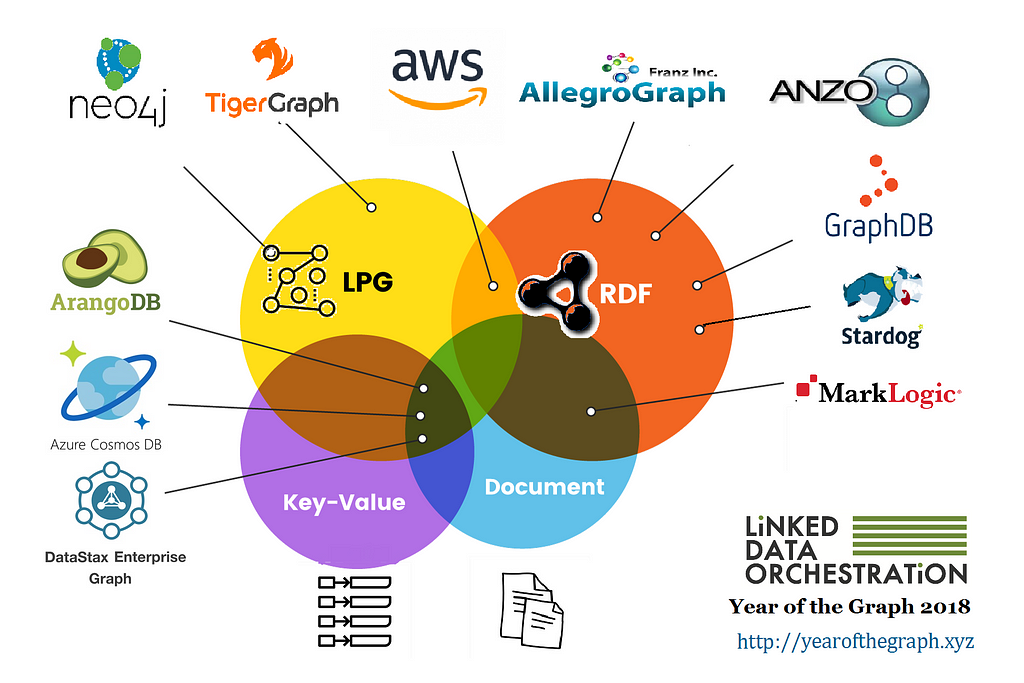Latest news about Bitcoin and all cryptocurrencies. Your daily crypto news habit.

What is a graph database? Do you really need one, and if yes, how do you choose?
That’s what it all comes down to. This month’s edition of the Year of the Graph newsletter is special.
Apart from the usual hubbub, which is somewhat slower this time of year, this month the Year of the Graph offering expands to the Year of the Graph Report.
Other than that, this edition features 10+1 items to make for the extended time period it covers, and features mostly educational resources on using Gremlin, Cosmos DB, DSE Graph, on graph data modeling, and combining graphs with machine learning.
1. What is a graph database? Do you really need one, and if yes, how do you choose? I’ve been often asked those questions, and they are not the type that can be answered easily.
It takes both expertise and hard work to be able to do this. Good news, i’ve done this so you don’t have to. This work is more up to date and comprehensive than anything else out there, and at a fraction of the price.
Special offer — the first 10 buyers get 33% off using code 10FIRST
2. All evidence points to the same direction — graph databases are poised for growth.
Markets & Markets projects a Compound Annual Growth Rate (CAGR) of 24.0% to reach a market size of USD 2,409.1 million by 2023.
Graph Database Market Expected to Reach 2,409.1 Million USD by 2023
3. If you want to get an overview of graph databases before getting to read the Year of the Graph Report, you can start with David Bechberger’s presentation. For everything you can’t find the answer to there, well, you know what to do.
4. Care for some expert advice on graph data modeling? Ted Wilmes gives his Graph Tips and Tricks that go beyond DSE Graph.
5. Need some more tips and tricks, this time of using Gremlin? What Jayanta Mondal talks about applies beyond Cosmos DB as well.
Tips for using the Gremlin API with Azure Cosmos DB
6. How about time traveling with graphs? Again, the techniques Daniel Larkin-York elaborates can be applied beyond ArangoDB
Time traveling with graph databases, such as NoSQL multi-model DB: ArangoDB
7. Wrapping up with tutorials, here is one on getting started with using GraphX on Spark to do graph analytics. One important point made here is that useful as it may be, this is NOT a graph database.
Distributed Graphs Processing With Spark GraphX - DZone Big Data
8. Let us not forget about query languages. With the call for a standardized query language for labeled property graphs still open in the community, TigerGraph’s Mingxi Wu weighs in with his opinion on what matters for graph query languages.
What Enterprises Should Know About Selecting a Graph Query Language
9. DeepMind’s Marta Garnelo has been working on combining symbolic methods for AI with machine learning. Although the former have been overshadowed by the latter, Garnelo argues they should be able to complement each other, and sees a role for RDF in this.
10. People in Octavian have also been working on the intersection of graph and machine learning, and they just released a dataset that can be used for question answering.
CLEVR graph: A dataset for graph based reasoning
11. Here is how the DIG team built their Domain Insight Graph to help counter trafficking using RDF:
AI tool "DIG" exposes sex rings and decodes open and dark web domains.
Would you like to receive the latest Year of the Graph Newsletter in your inbox each month? Easy — just signup below. Have some news you think should be featured in an upcoming newsletter? Easy too — drop me a line here.
Post Tagged with AI, AllegroGraph, AnzoGraph, ArangoDB, AWS, CosmosDB, DSE, Graph, GraphDB, GraphX, Gremlin, Machine Learning, MarkLogic, Neo4j, Neptune, Report, Spark, Tigergraph
Originally published at linkeddataorchestration.com on July 19, 2018.
The Year of the Graph Newsletter: July 2018 was originally published in Hacker Noon on Medium, where people are continuing the conversation by highlighting and responding to this story.
Disclaimer
The views and opinions expressed in this article are solely those of the authors and do not reflect the views of Bitcoin Insider. Every investment and trading move involves risk - this is especially true for cryptocurrencies given their volatility. We strongly advise our readers to conduct their own research when making a decision.